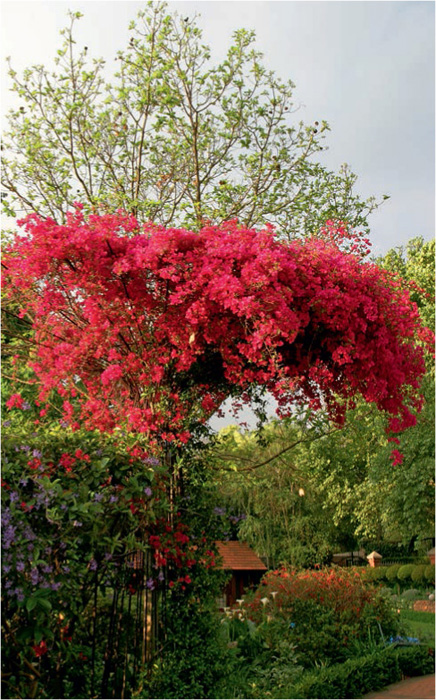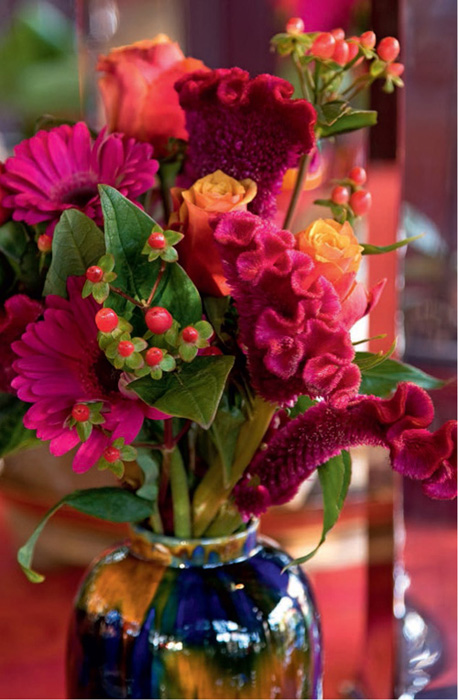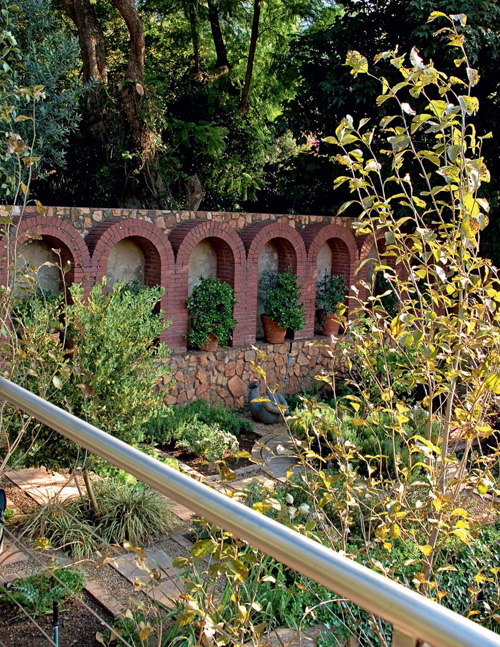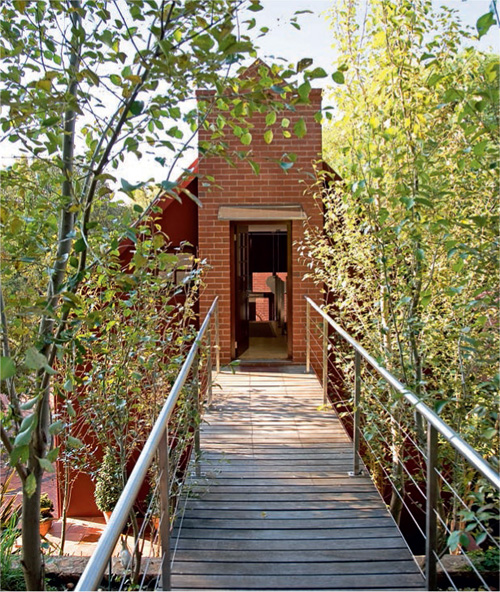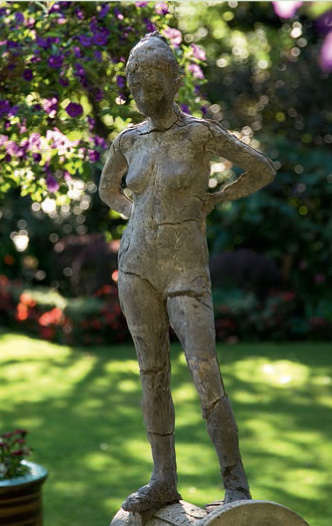Passion for perfection
The suburb of Westcliff was presumably named for its steep stone cliffs and dramatic view to the horizon over Johannesburg West. Most of the houses have a backdrop of sheer rock, and gardens are carved out of the more level frontage. Krysia and Oliver Back are a pair of artistic perfectionists: Krysia, an adventurous interior designer, and Oliver with the strong genetic input of his architect mother, Carmel Back, who designed some of the country’s most interesting buildings before her untimely death. When they bought the property, the house was ‘delightfully dilapidated, the garden overgrown with prickly rose brambles’. An exhausted and unsightly tennis court took up much of the space.
Together, over a period of 18 years, they worked to transform the property into what it is today. The look is timeless; classical symmetry blended with a modern twist.
Wide steps flanked by retaining walls and terraces, to level the sharply sloping site, were built from stone excavated from the property. Krysia and Oliver were inspired by ideas gleaned from holidays in France, and they pay generous tribute to the influence of British design guru Sir Terence Conran’s magnificent garden in Provence.
Despite the rocky terrain, Westcliff’s early gardeners planted huge numbers of trees, presumably to provide shade from the hot west afternoon sun. These are now mature, and the Backs inherited statuesque plane trees and tall cypresses. ‘These provided good bones,’ explains Oliver. Strategically placed sculptures complement the strong lines of the trees.
‘My theatrical side makes me seek the original, the dramatic.’
KRYSIA BACK



